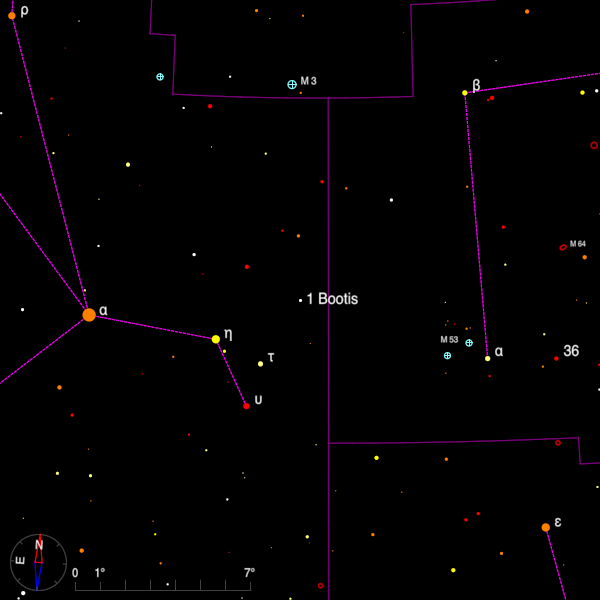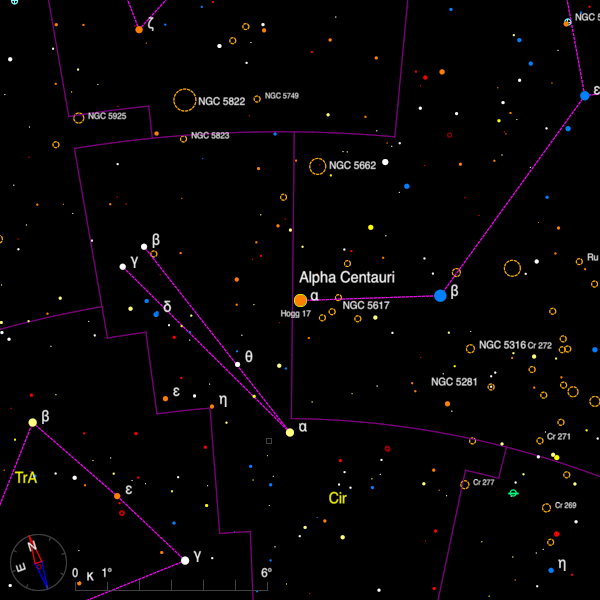-
May 2021 - Double Star of the Month
1 Boötis (13 40 40.50 +19 57 20.4) is a star just about visible to the naked eye on a good night. It can be found about 4 degrees WNW of eta Boötis. It is not an easy double star for the small aperture and I have not actually observed it, even thought the primary is a naked-eye object.

A finder chart for the double star 1 Boötis in Boötes created with Cartes du Ciel. The Washington Double Star Catalog (WDS) gives the magnitudes as 5.8 and 9.6 with the current position angle and separation being 133 degrees and 4.4 arc-seconds. A 15-cm aperture should give a good view of the stars, the primary being white - its spectral class is A1V. There is a faint field star, magnnitude 12.2, 88 arc-seconds away whilst the 7.4 magnitude star at 208 arc-seconds has a similar parallax and proper motion as the stars of the binary. According to Gaia EDR3 the three lie at a distance of 310 light-years.
For the first time in this series, (as far as I know, and deliberately at least!) a binary star is going to be included a second time. This is because it is an exceptional object, about which much has been learned recently so it seems a good time to take another look at alpha Centauri (14 39 36.50 -60 50 02.3).

A finder chart for the double star alpha Centauri in Centaurus created with Cartes du Ciel. In May 2007, alpha Cen was at PA 235 degrees and 8".4. This month it can be found at 354 degrees and 6".35, although it is now widening, but only as far as 10".4 in 2020, and then it closes to 1".7 in 2038. Extensive direct imaging has been done of both the stars in the bright binary and the physically connected Proxima Centauri.
To date there definitely seems to be one planet orbiting Proxima and recent observations suggest there is a second one. Both bright components have been suspected of having planetary companions and a recent paper purports to show a candidate close to the A component.
The latest data from the Gaia mission - data release EDR3 - includes a measurement of Proxima Centauri. The satellite finds the star to be 4.2465 light-years away with a quoted error of 0.0003 light-years. The main stars are far too bright to have been considered for data reduction at present though it is hoped that this might be done towards the end of the present mission.
Alpha Centauri is always a 'goto' object for the observer fortunate enough to be south of latitude +20 degrees or so. I have seen the stars in the 67-cm refractor at Johannesburg, and they appear like car headlights - dazzlingly bright.
Bob Argyle - Double Star Section Director